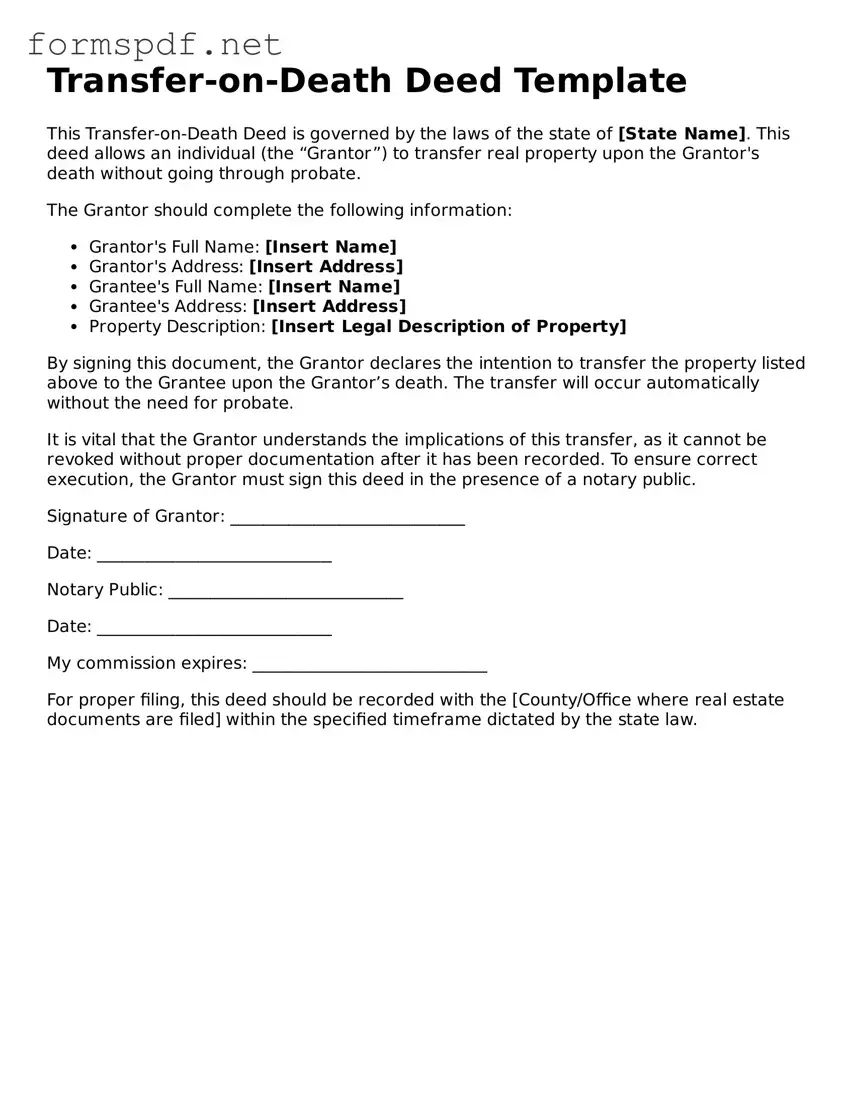Transfer-on-Death Deed Template
This Transfer-on-Death Deed is governed by the laws of the state of [State Name]. This deed allows an individual (the “Grantor”) to transfer real property upon the Grantor's death without going through probate.
The Grantor should complete the following information:
- Grantor's Full Name: [Insert Name]
- Grantor's Address: [Insert Address]
- Grantee's Full Name: [Insert Name]
- Grantee's Address: [Insert Address]
- Property Description: [Insert Legal Description of Property]
By signing this document, the Grantor declares the intention to transfer the property listed above to the Grantee upon the Grantor’s death. The transfer will occur automatically without the need for probate.
It is vital that the Grantor understands the implications of this transfer, as it cannot be revoked without proper documentation after it has been recorded. To ensure correct execution, the Grantor must sign this deed in the presence of a notary public.
Signature of Grantor: ____________________________
Date: ____________________________
Notary Public: ____________________________
Date: ____________________________
My commission expires: ____________________________
For proper filing, this deed should be recorded with the [County/Office where real estate documents are filed] within the specified timeframe dictated by the state law.
